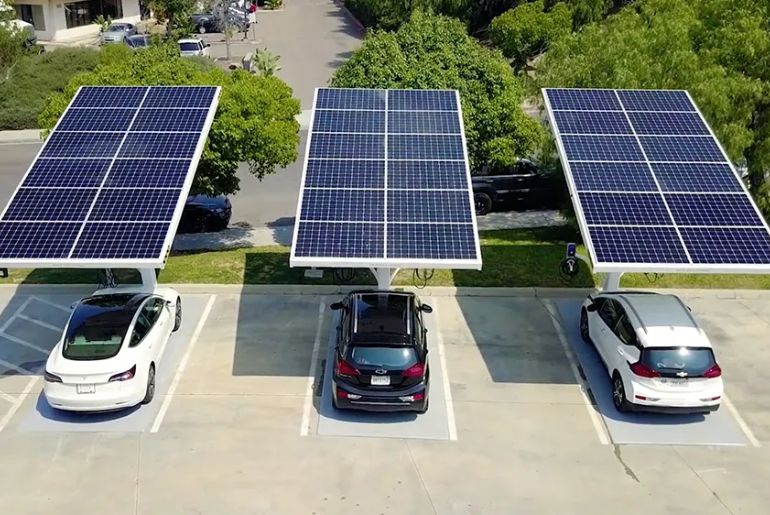The rise of electric vehicles (EVs) represents a transformative shift in the transportation sector, driving a global movement towards sustainability, reduced carbon emissions, and energy efficiency. As EV adoption accelerates, the spotlight turns to the energy sources powering EV charging infrastructure. While electric vehicles offer a cleaner alternative to internal combustion engine vehicles, their environmental impact is directly tied to the energy used for charging. Integrating renewable energy—such as solar, wind, and hydropower—into EV charging infrastructure is critical to ensuring that the entire ecosystem remains truly sustainable.
The Intersection of EV Charging and Renewable Energy
The increasing number of electric vehicles on the roads brings with it a growing demand for EV charging infrastructure. This infrastructure, consisting of charging stations, grid connections, and energy management systems, plays a pivotal role in supporting the widespread adoption of EVs. However, the environmental benefits of EVs can be undermined if the electricity powering them comes from fossil fuel-based sources.
Reducing Carbon Footprint with Renewable Energy
When EV charging infrastructure is powered by renewable energy sources, the carbon footprint of electric vehicles is significantly reduced. Renewable energy, derived from sources like solar panels and wind turbines, produces zero greenhouse gas emissions during operation. By integrating these clean energy sources into EV charging stations, the life-cycle emissions of EVs—from production to operation—can be minimized.
For example:
- Solar-powered EV charging stations are being deployed in urban and rural areas to provide clean energy for electric vehicles.
- Wind energy is being harnessed in regions with abundant wind resources to power large-scale EV charging networks.
The Role of Smart Grids in Managing EV Charging Demand
The rise in electric vehicles places significant stress on traditional power grids. Without proper energy management, simultaneous EV charging during peak hours could overload local grids. Here, renewable energy, in conjunction with smart grid technology, provides an effective solution.
Smart grids use real-time data and advanced analytics to balance supply and demand efficiently. Renewable energy sources, combined with smart grids, allow for:
- Optimized EV charging schedules during periods of high renewable energy production.
- Integration of Vehicle-to-Grid (V2G) technology, where EVs can feed excess electricity back into the grid.
By aligning EV charging with peak renewable energy production, energy efficiency is maximized, and grid stability is maintained.
Solar-Powered EV Charging Infrastructure
One of the most promising solutions for powering electric vehicles is solar energy. Solar-powered EV charging stations offer flexibility and scalability, making them suitable for urban centers, remote areas, and off-grid locations.
- Off-grid EV charging solutions: Solar panels combined with energy storage systems allow EV charging stations to operate independently of traditional power grids.
- Urban integration: Rooftop solar installations on commercial buildings and parking lots are increasingly being used to power EV charging stations directly.
Countries like the USA, Germany, and India are making significant strides in deploying solar-powered EV infrastructure, setting benchmarks for sustainable energy practices.
Wind Energy and Large-Scale EV Charging Networks
Wind energy also plays a key role in powering EV infrastructure, especially in regions with consistent wind patterns. Offshore and onshore wind farms are capable of generating large amounts of clean electricity, which can be directed towards EV charging networks.
For instance:
- In Europe, wind energy contributes significantly to powering EV charging hubs along major highways.
- Integration of wind energy with smart grids enables real-time adjustments to ensure optimal EV charging without overloading the grid.
The scalability of wind energy makes it ideal for supporting large-scale EV charging infrastructure, including supercharger networks for long-range electric vehicles.
Hydropower: A Reliable Energy Source for EV Charging
Hydropower, one of the oldest and most reliable renewable energy sources, continues to play a significant role in powering EV charging infrastructure. Countries with abundant water resources have leveraged hydropower to meet the energy demands of electric vehicles effectively.
- Hydropower plants generate consistent energy output, making them ideal for base-load EV charging stations.
- In regions like Norway, where nearly 100% of electricity comes from hydropower, electric vehicles are almost entirely powered by renewable energy.
Challenges in Integrating Renewable Energy with EV Charging Infrastructure
While the benefits are clear, integrating renewable energy into EV charging infrastructure is not without challenges:
- Intermittency of Renewable Energy: Solar and wind power generation depend on weather conditions, leading to fluctuations in energy availability.
- Energy Storage Solutions: Effective storage systems, such as lithium-ion batteries, are essential to store excess energy and ensure consistent EV charging.
- Infrastructure Investment: Transitioning existing EV charging infrastructure to renewable energy sources requires significant financial investments.
Despite these challenges, technological advancements in energy storage and grid management are gradually addressing these barriers, paving the way for cleaner and more reliable EV infrastructure.
The Future of EV Charging Powered by Renewables
As technology continues to evolve, the integration of renewable energy with EV charging infrastructure will become more seamless. Emerging trends include:
- Wireless EV charging systems powered by solar and wind energy.
- Expansion of V2G (Vehicle-to-Grid) technology to create bidirectional energy flow.
- Smart charging algorithms that automatically adjust EV charging schedules based on renewable energy availability.
Governments and private stakeholders are also playing a crucial role by introducing incentives, subsidies, and policy frameworks to accelerate the deployment of renewable-powered EV charging infrastructure.
Conclusion
The transition to electric vehicles represents a significant milestone in the global push towards sustainable mobility. However, the true environmental potential of EVs can only be realized if their power source is equally sustainable. Renewable energy—be it solar, wind, or hydropower—holds the key to ensuring that EV charging infrastructure remains clean, reliable, and efficient.
By aligning electric vehicle adoption with advancements in renewable energy and smart grid technologies, we can create an ecosystem where EVs not only reduce tailpipe emissions but also contribute to a carbon-neutral energy landscape. Investments in renewable-powered EV charging infrastructure today will not only shape the future of transportation but also drive us closer to a greener, more resilient planet.

